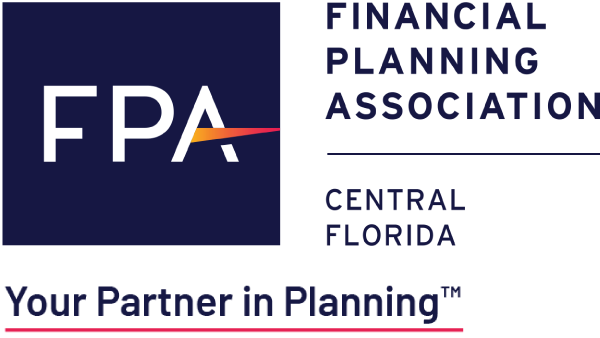
Financial Planning Checklist for GENERATION X

The following is the second in a series of articles aimed at providing members of a specific generation with a checklist of financial planning priorities appropriate to their age and circumstances. Here in the second of three articles in the series, we provide a financial planning checklist for members of Generation X. (Part 1 focused on Baby Boomers. In Part 3 we’ll address the financial planning needs of Millennials.)
Sandwiched by their dependent children on one side and their aging parents on the other, members of Generation X (born roughly between 1965 and 1980) find themselves in unique financial planning territory. How do they address their own financial priorities — fulfilling current obligations and planning for the future — while maintaining the financial wherewithal to provide support to their dependent children and to their parents, too, should they need it?
The 11-item checklist below is designed to help Gen Xers sort through these often-competing multi-generational interests and get clear about their financial planning priorities.
- Know where you stand. Create a snapshot of all assets and liabilities to understand your current net worth. “List everything you own,” suggests Ashley Bleckner, a Certified Financial Planner™ with the wealth management firm R.S. Crum in Newport Beach, CA, “from bank accounts to investment and retirement accounts, a home, automobiles — everything. Then list all your liabilities — mortgage, auto loans, credit card balances, student debt.” Be sure to update both sides of the ledger annually, so you have a clear picture of your current financial standing.
- Know where your money goes. Tracking spending can provide valuable insight into positive and negative money habits. Are there areas where unnecessary, even frivolous, spending might be put to more constructive use, such as to pay down debt or increase saving for retirement? Try tracking spending with an easy-to-use (and free) budgeting tool such as those available via the website com.
- Give yourself a cash cushion. The unforeseen — an unexpected healthcare expense, a costly home or automotive repair, job loss, etc. — may happen at any time. And if it does, it’s best to have an emergency fund from which to draw to cover your expenses, instead of having to draw from a retirement account (potentially incurring early withdrawal penalties and additional taxes), sell investments (also potentially increasing tax liability), rely on credit cards or take out a loan, with the potentially expensive interest costs that accompany the additional debt. The general rule of thumb is to keep in reserve an amount equal to three to six months of recurring expenses, according to Bleckner.
- Stay on top of debt. “Be cautious when taking on debt and commit to aggressively paying it down,” Bleckner advises. When paying down debt, target accounts that carry the highest interest rate, she suggests. Transfer credit card balances to cards that offer lower rates. Find areas where you can cut discretionary spending (see the first checklist item) and use those funds to pay down debt. Also consider some sort of debt-consolidation vehicle, such as a home equity loan or home equity line of credit, where debt from multiple sources is moved to a single lender and the interest you pay is tax-deductible.
- Save/invest more toward retirement. The next phase of life may still be decades away, but it’s never too early to start setting aside some of your earnings for down the road. Indeed, to live comfortably themselves during what could be a lengthy retirement, while also potentially offering support to children and aging parents, members of Gen X need to save as aggressively as possible. Saving 10 to 12% of annual household income for retirement is a good target to shoot for, Bleckner says. Aim to contribute as much to tax-favored retirement plans [401(k), traditional IRA, Roth IRA and the like] as tax law allows, suggests Jessica O’Donnell, a Massachusetts-based Certified Financial Planner™ with Summit Financial Strategies. Be sure to take advantage of any retirement plan matching contributions offered by your employer, adds Bleckner. Gen Xers who are 50 or older should also consider capitalizing on so-called “catch-up” provisions that allow them to contribute as much as $6,000 more to their retirement plans each year.
- Be tax-savvy. Use basic tax-reduction strategies to minimize your tax burden and maximize the value of your assets, Bleckner suggests. That means taking advantage of tax breaks for retirement plan contributions, diversifying your retirement accounts in terms of their tax treatment (Roth vs. “qualified” accounts), and being aware of how the buying and selling of investment positions can impact your tax burden (capital gains taxes, etc.).
- Invest in the appropriate type and amount of insurance. If people rely on your income, it’s a good idea to consider life insurance as well as disability insurance (short- and long-term). Both protect you and your family financially should disaster strike. Also be sure you and your family have an adequate level of health insurance, homeowners or renters insurance, and auto insurance. An umbrella insurance policy also may make sense, says Bleckner, to provide an extra layer of personal liability protection from risks that could exceed the coverage limits of traditional kinds of insurance policies. Review your insurance policies annually — and when there’s a major life change, such as the birth of a child or a change in marital status.
- Plan how you’ll pay for kids’ college. The cost of a college education is steep and rising, so the earlier you can start setting aside money in a Section 529 college savings plan or similar tax-favored plan, the better, says O'Donnell.
- Get your estate and related affairs in order. You want to be sure you and your family are legally protected in case the worst happens, even if it doesn’t happen until much later in life. That means getting a legally sound will, along with powers of attorney (general POA and health POA), and advanced medical directives. To transfer wealth tax-efficiently when you die, a trust also may be worth considering, says Bleckner. Be sure to review these documents periodically and adjust them as your circumstances change.
- Give yourself the gift of a plan. Working with a financial professional who has your best interests in mind, develop a big-picture strategy for managing your financial resources and reaching your life goals. A written financial plan can deliver immediate benefits, both tangible (a better managed financial life can translate into a lower tax burden, better-performing investments, etc.) and intangible (the peace of mind knowing your assets are being well-managed and you’re on the right financial track). Visit PlannerSearch.org, the Financial Planning Association’s searchable national database, to find a financial planning professional in your area.
- Take time to enjoy the moment. “Life goes by very quickly,” says Certified Financial Planner™ Jamie Ebersole, founder of Ebersole Financial in Wellesley Hills, MA. “Don't get so caught up in the past or future that you forget to live for today.” Savor the here and now and your family, while planning for tomorrow — and the long-term future.

